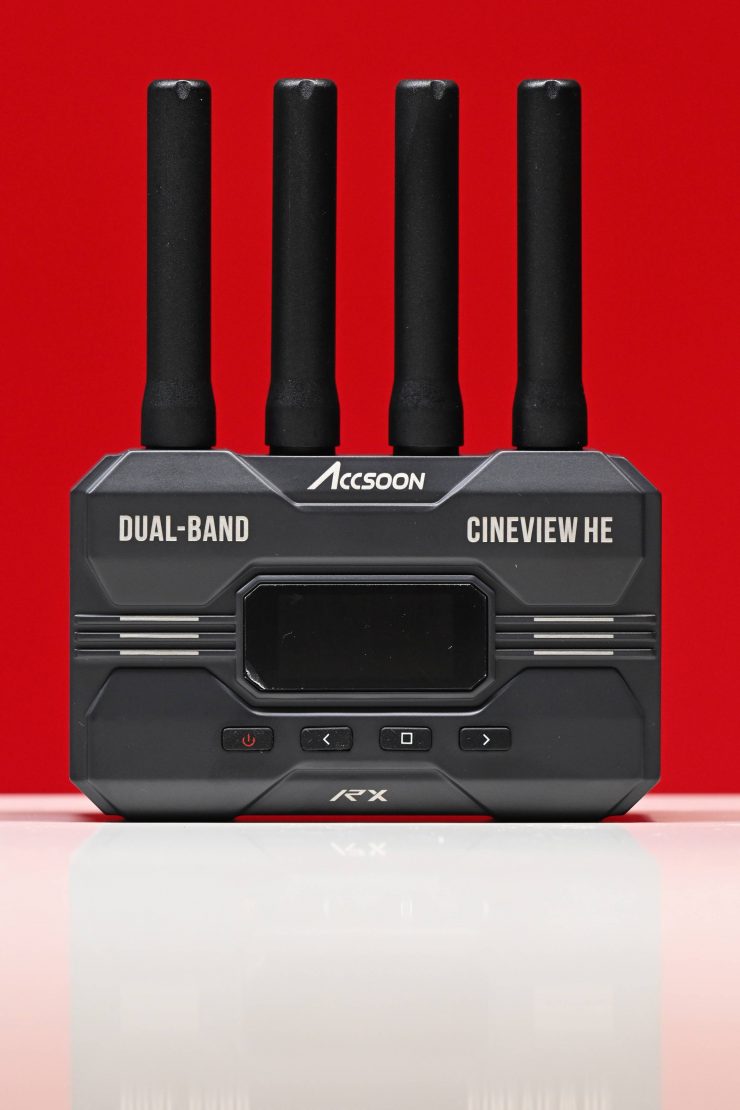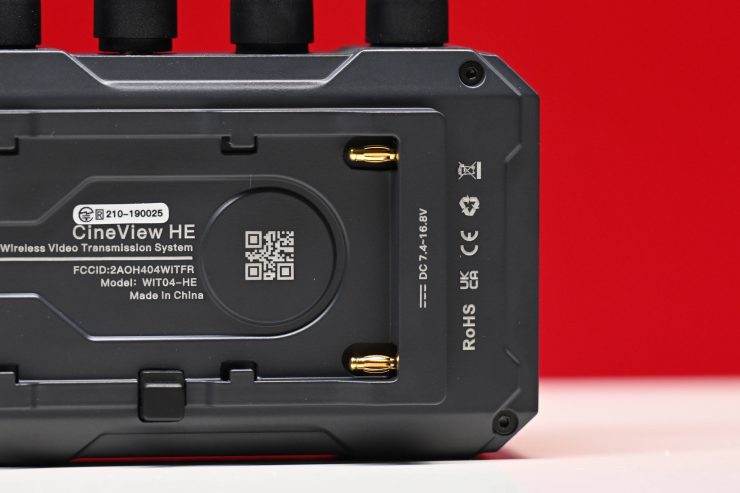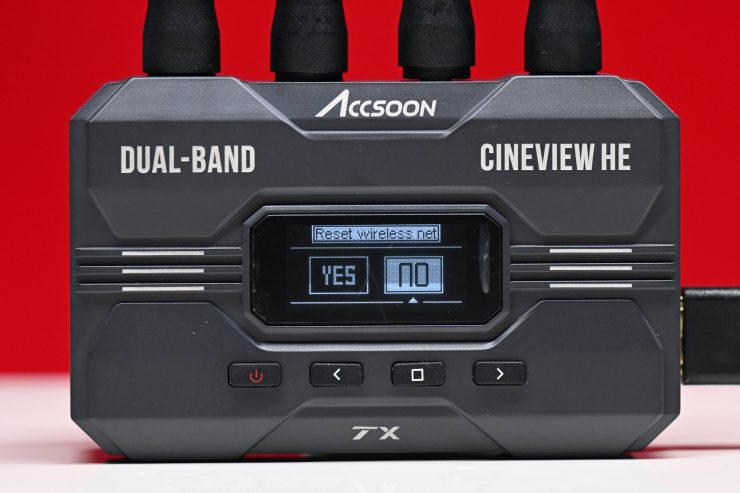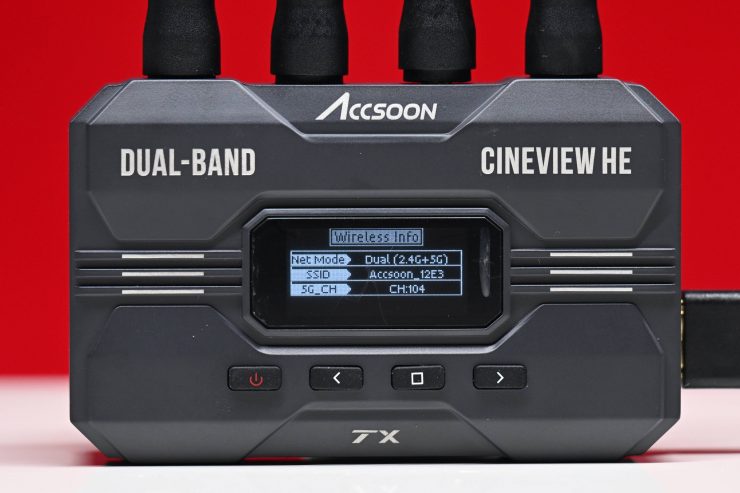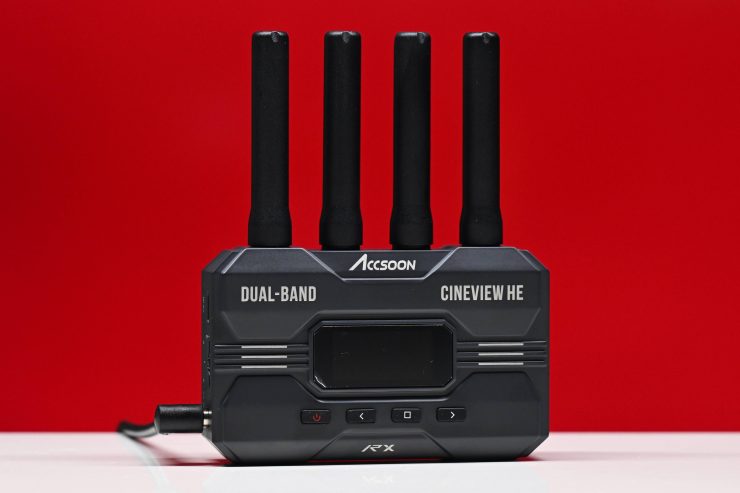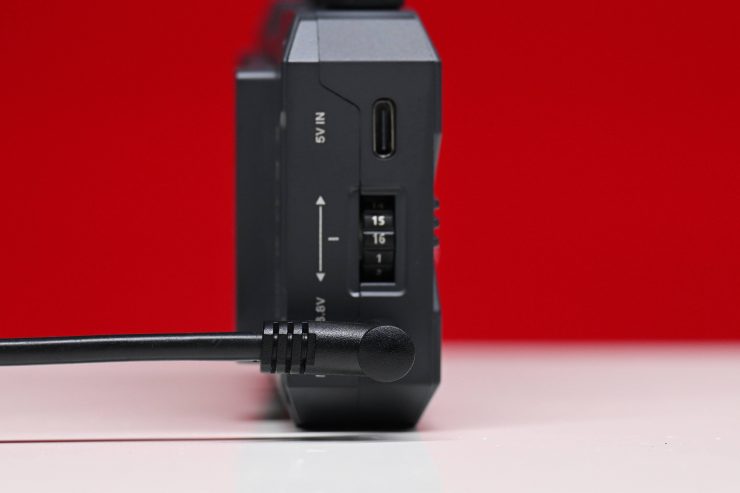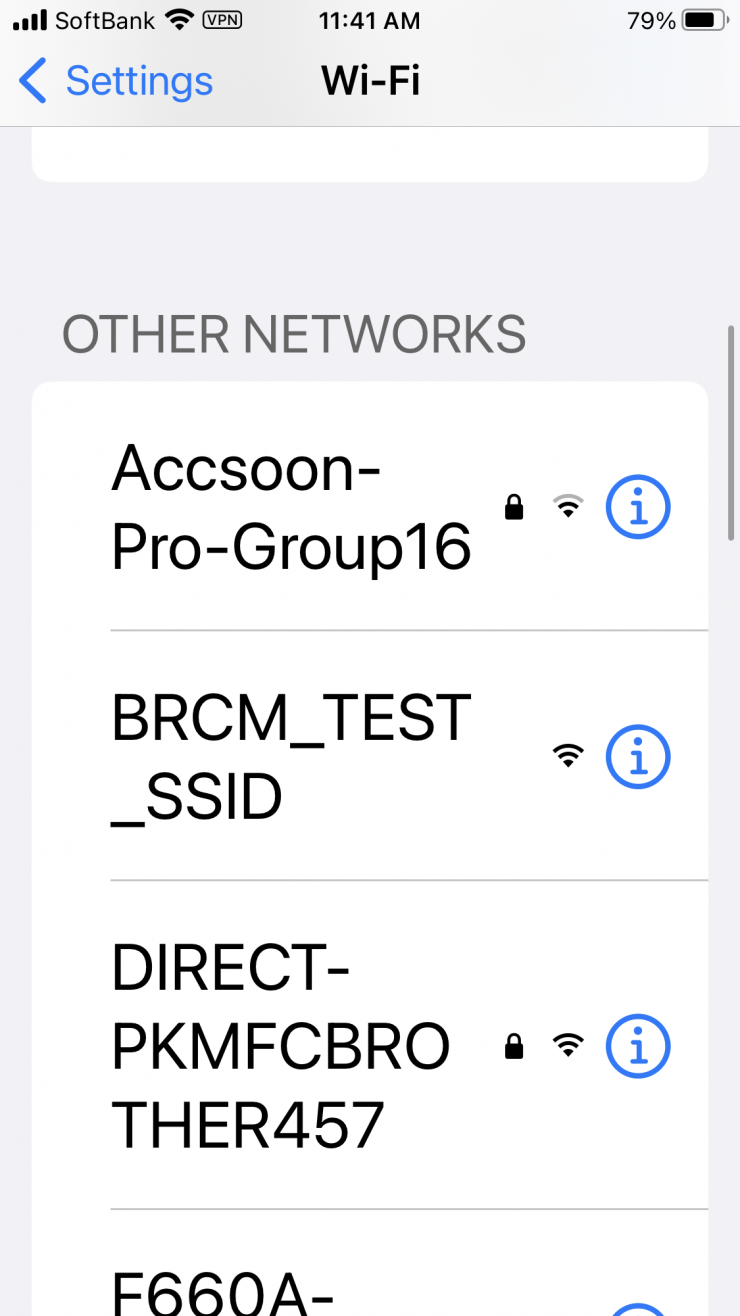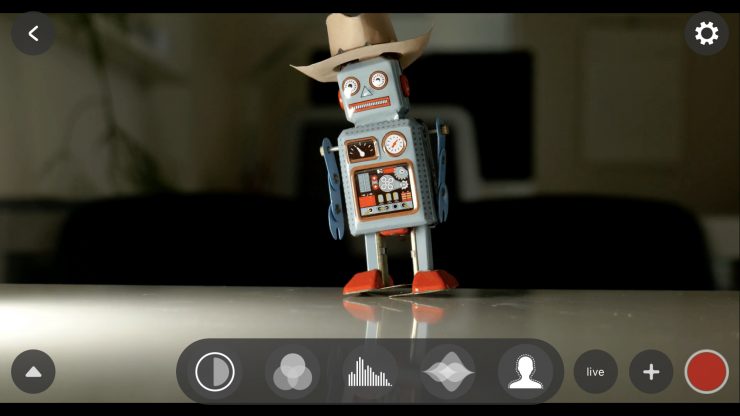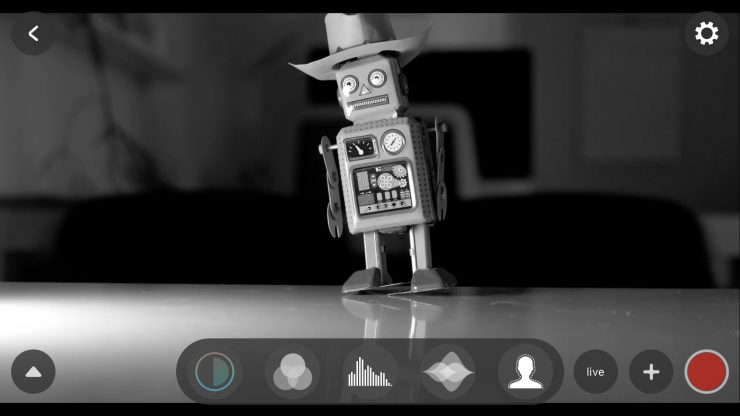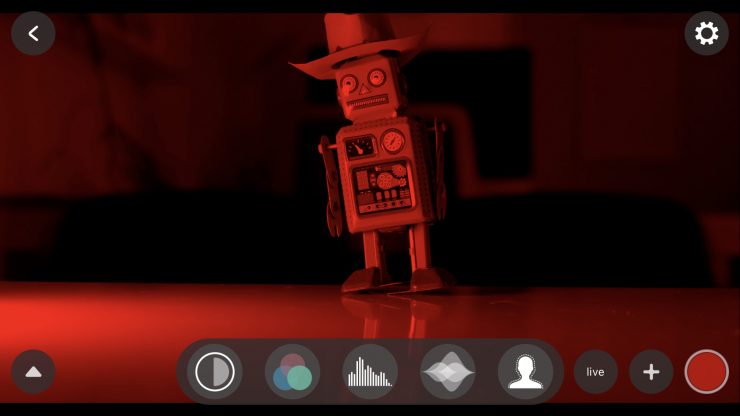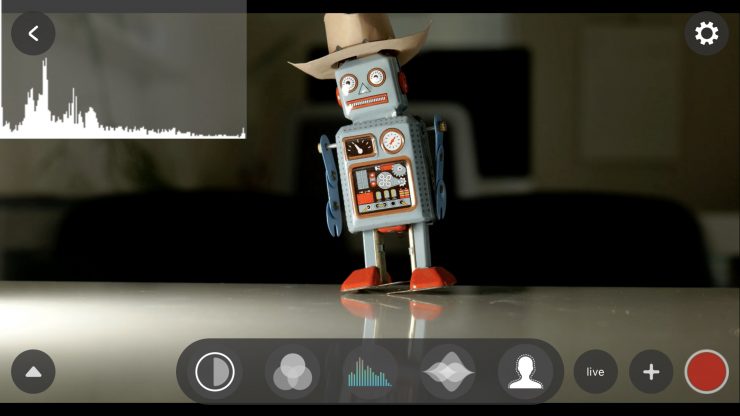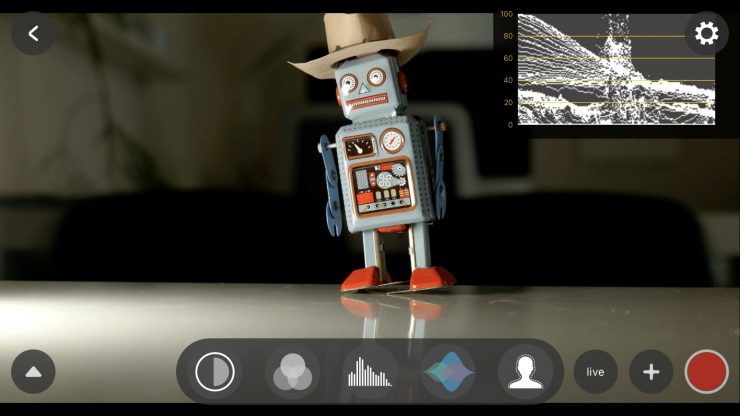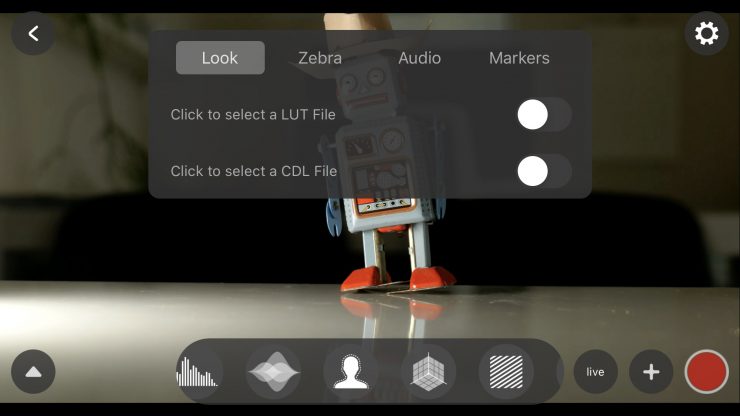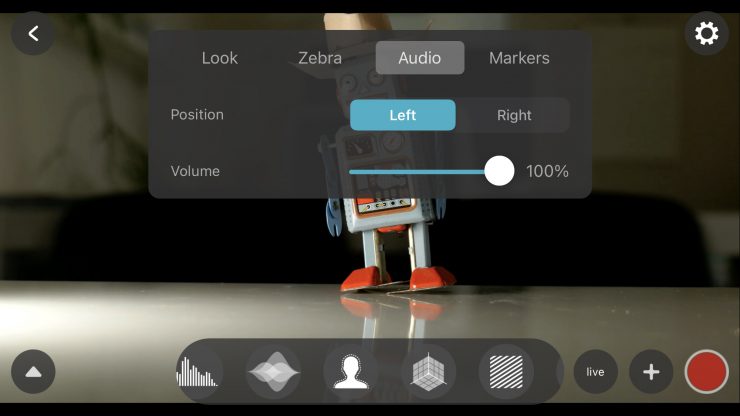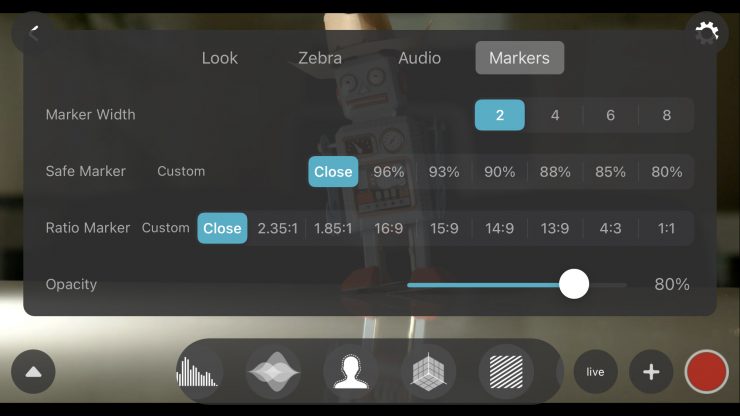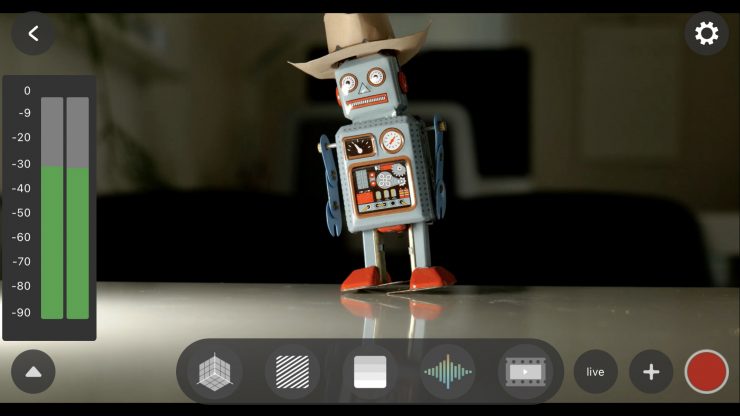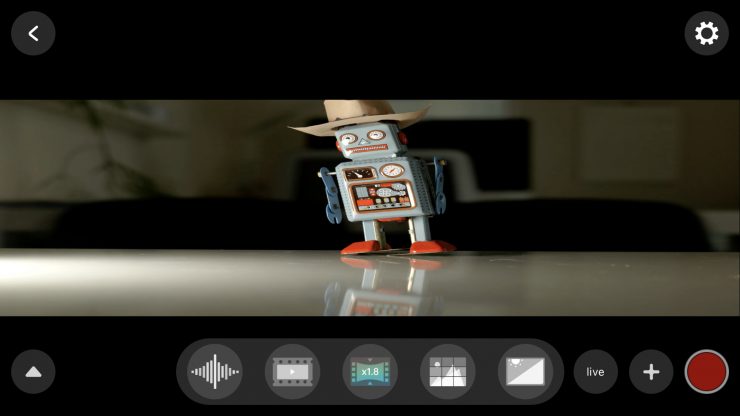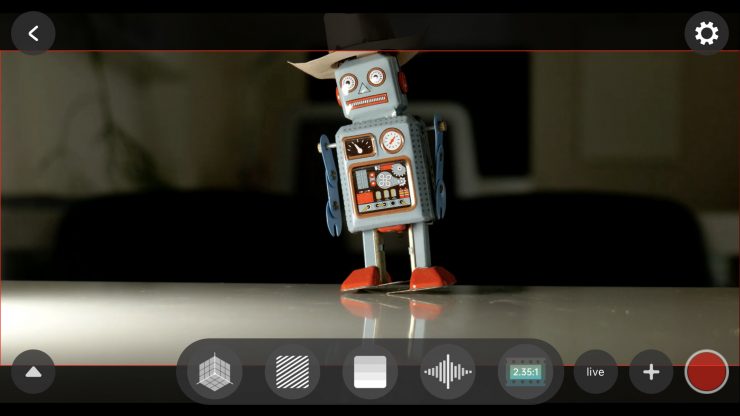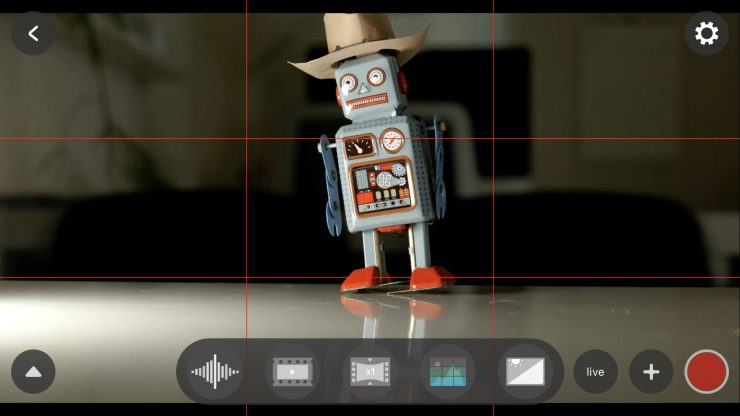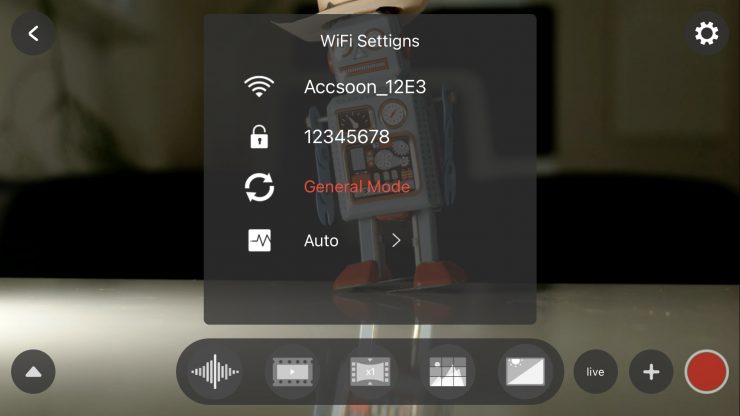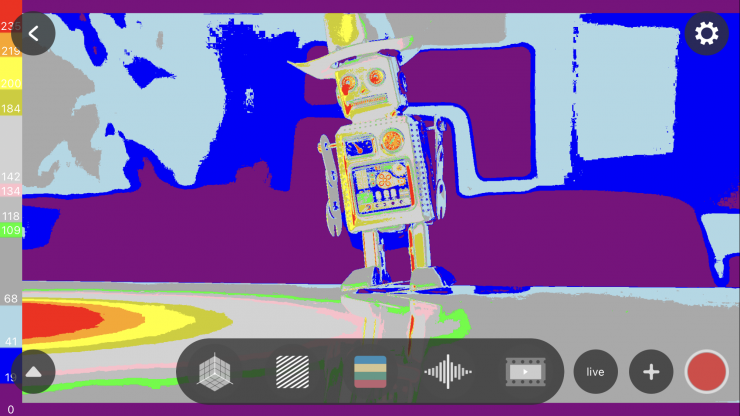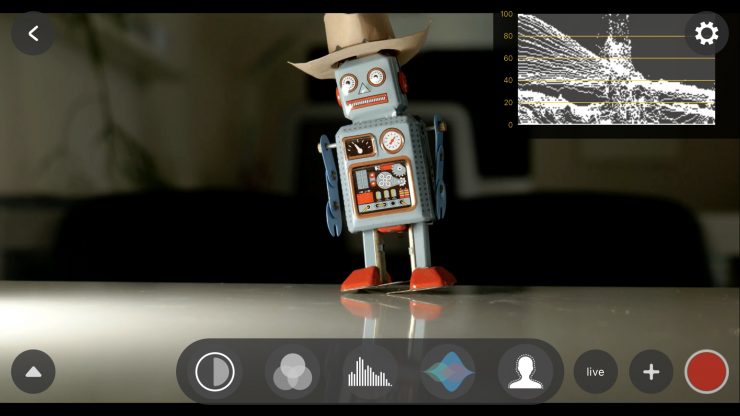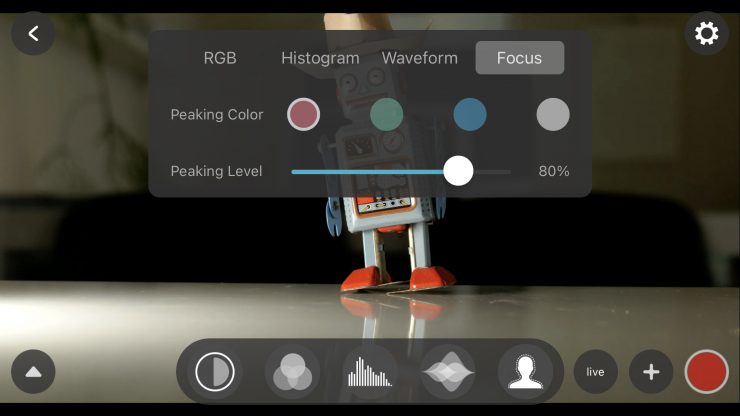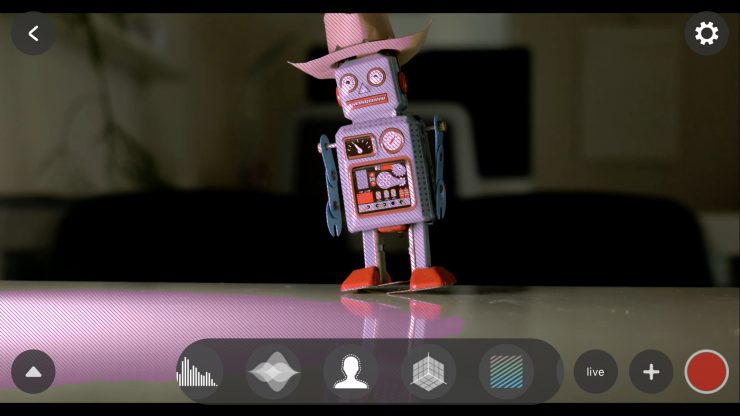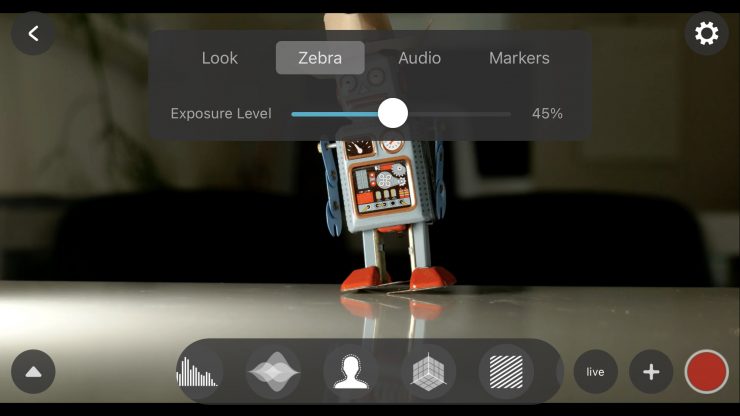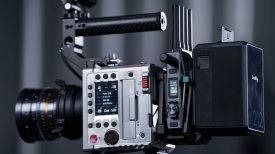
The Accsoon CineView HE Wireless Video Transmitter & Receiver Kit is an affordable HHDMI wireless system with a claimed range of 1200′ / 365.76m.
The CineView HE Wireless Video Transmitter & Receiver Kit from Accsoon includes a transmitter and receiver, which allows you to send up to 1080 60p video to the included receiver as well as simultaneously up to three additional receivers or smartphones and tablets.
Key features
- Wireless Transmitter/Receiver Units
- Transmit to Receiver + 3 Devices
- Mix up to 4 Receivers, Tablets & Phones
- 1200′ 1080p60 HDMI Transmission
- USB Type-C UVC Output for Live Streaming
- iOS/Android App for Configuration
- Dual-Channel Livestream Transmission
- 12-Hour Battery Life, 1.3″ OLED Displays
- USB & DC Input, L-Series Battery Support
- 2 x Shoe Mount Adapters Included
The transmitter and receiver provide multiple power options, including a DC barrel input, an L-series battery plate, and a USB Type-C input. Due to its low-power, fanless design, an NP-970 battery can provide up to 12 hours of runtime for each unit. Dual-channel transmission makes the CineEye 2S Pro highly resistant to outside interference and ensures that a strong, high-quality signal will be delivered over the 1200′ line-of-sight distance.
The affordable wireless video space is getting crowded
Over the last few years, we have seen countless affordable wireless video systems flooding the market.
Accsoon was arguably the first company to bring affordable wireless monitoring to the market. The original CineEye was a big hit with budget filmmakers as it allowed you to stream an HDMI signal directly to smartphones and tablets through Wi-fi. At $249 USD it was arguably the first budget-friendly way of viewing wireless video on multiple devices. Above you can see our video report from NAB 2019.
Since that time Accsoon has released a lot of different wireless video systems with different functionality at different price points. I have reviewed quite a few of them and they have generally performed well compared to the competition.
Accsoon does now face very stiff competition from a wide array of affordable wireless video systems that have come to market from various manufacturers.
What it is and what it isn’t
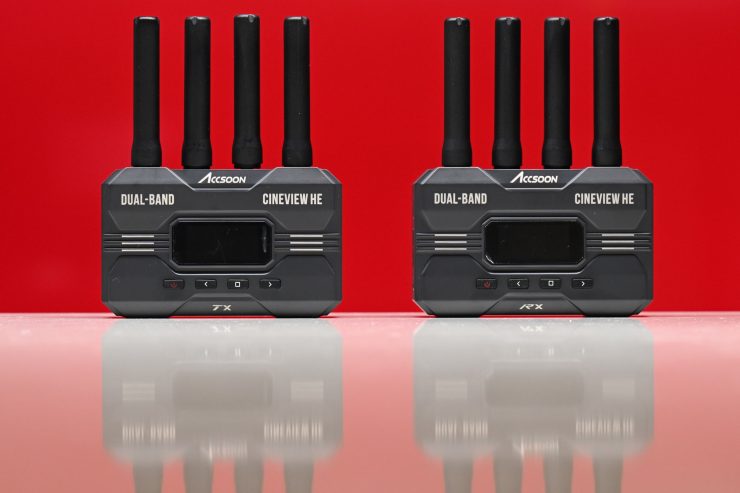
The CineView HE Wireless Video Transmitter & Receiver Kit, like all of the 2.4GHz and 5GHz systems that are out there on the market, shouldn’t be compared with more expensive systems that send uncompressed video. All of these affordable options that don’t send uncompressed video are going to have some level of latency.
You need to be very aware that this is not intended to be a replacement for a close to zero latency system. Any wireless video system that utilizes 2.4GHz or 5GHz is compressing the image signal and you will always get some delay. I wouldn’t recommend any of these systems if you want to use them to pull focus off a transmitted image.
The CineView HE Wireless Video Transmitter & Receiver Kit is much more suitable as an easy way of letting multiple people monitor images without needing to give everyone monitors or RX units.
Size & Design
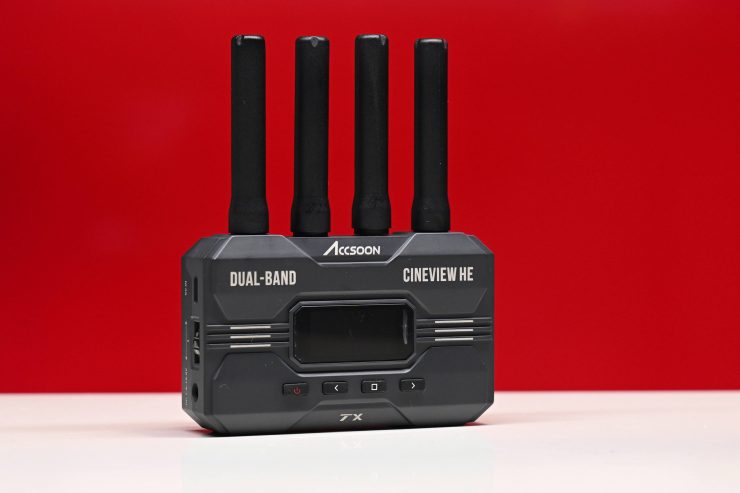
CineView HE 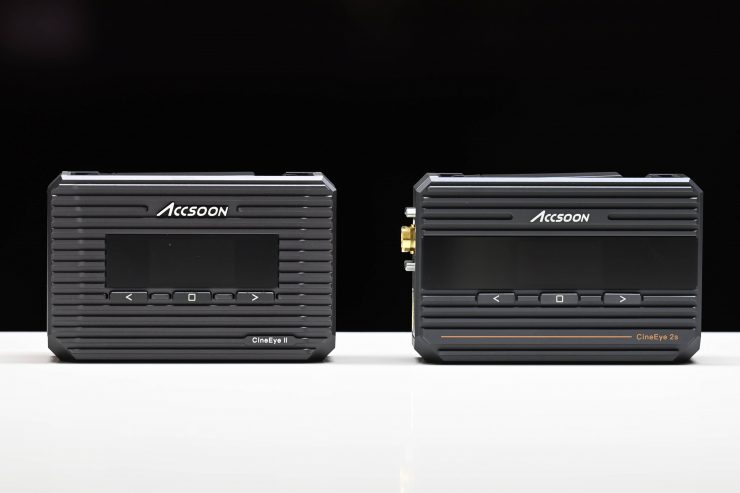
CineEye 2 on the left, CineEye 2S on the right
The CineView HE features a very similar form factor to the CineEye 2 and CineEye 2S.
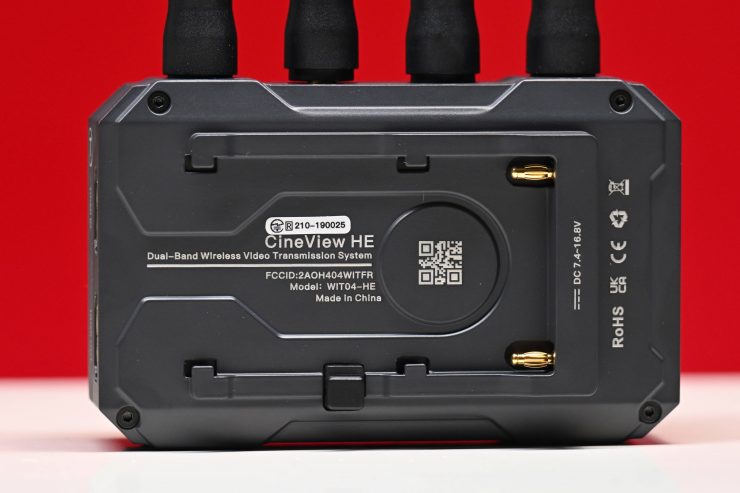
Both the TX and RX units feature Sony NP battery plates on the back.
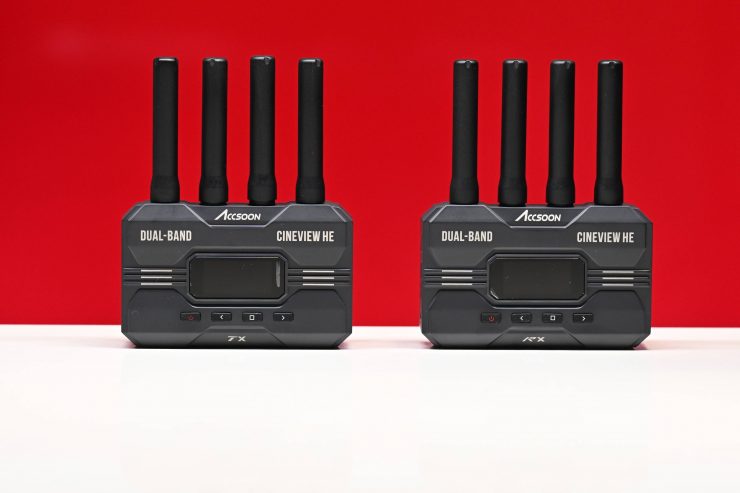
The CineView HE Wireless Video Transmitter & Receiver both weigh 200 g / 7.05 oz (including the antennas). This makes them slightly lighter than both the CineEye 2S and CineEye 2 that weigh 213 g / 7.5 oz.
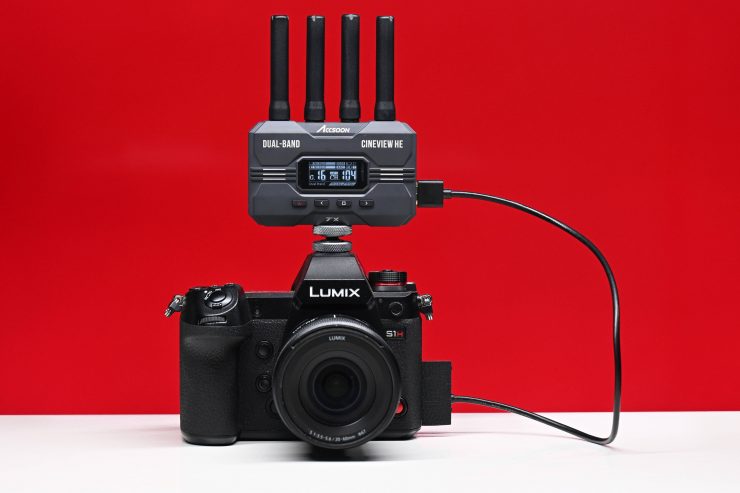
The weight and footprint, especially if you are using the TX with a Sony NP battery, do make the CineView HE feel quite big on small-sized mirrorless hybrid cameras, however, just about every other competing product on the market features a similar size and form factor.
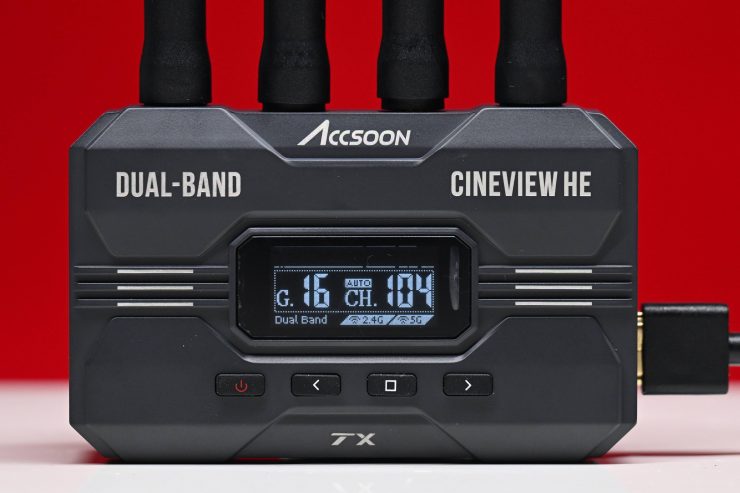
The CineView HE Wireless Video Transmitter & Receiver both feature the same exact 1.3″ OLED screen that can be found on the CineEye 2, CineEye 2S, and CineEye 2 Pro.
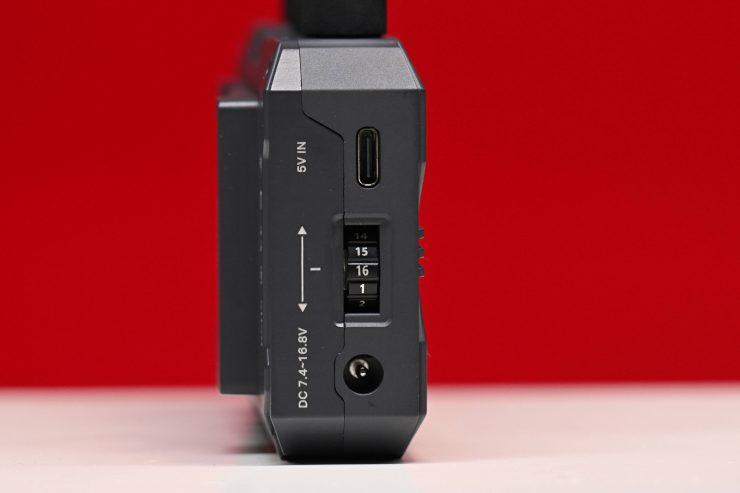
On one side of both units, you have a dial to change the Group, a 5V USB-C input, and the DC input.
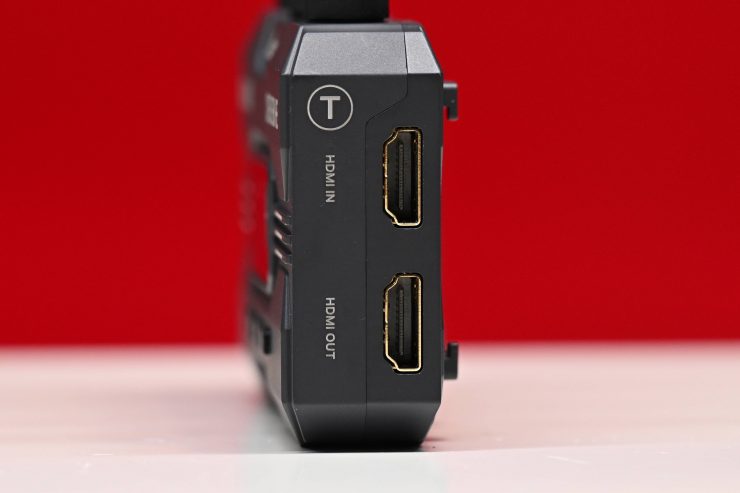
TX 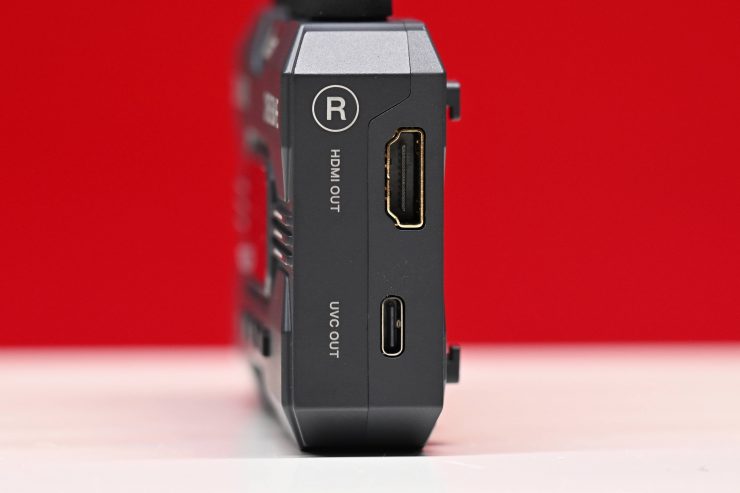
RX
On the other side, the TX has a full-sized HDMI In and Out and the RX has an HDMI Out and a UVC out.
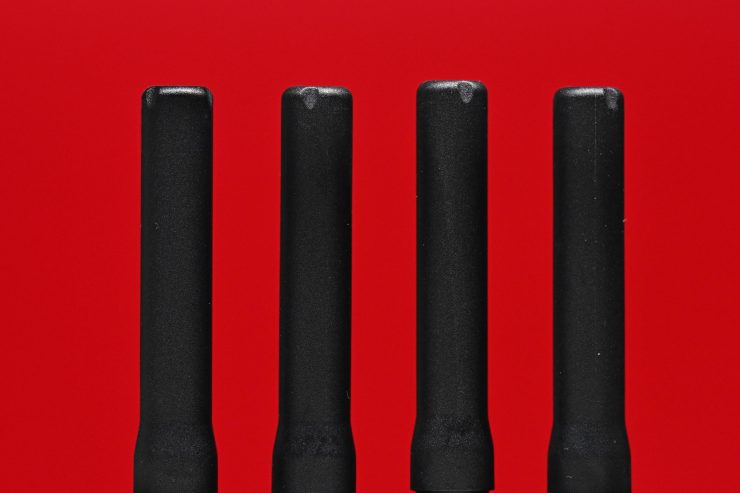
What is interesting is that Accsoon hasn’t stuck with the same folding antenna design that they have utilized on a lot of their products that have the same form factor. The CineView HE Wireless Video Transmitter & Receiver both have four removable antennas.
Build Quality
The CineView HE Wireless Video Transmitter & Receiver are both robustly made. They feel very solid and a lot of that has to do with the hard metal enclosure.
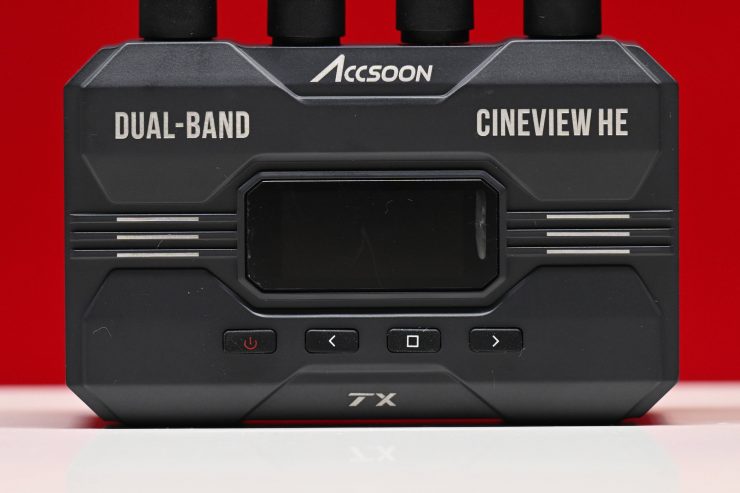
The buttons and dials are nice and tactile and nothing on either the TX or RX feels like it would break even if you dropped them.
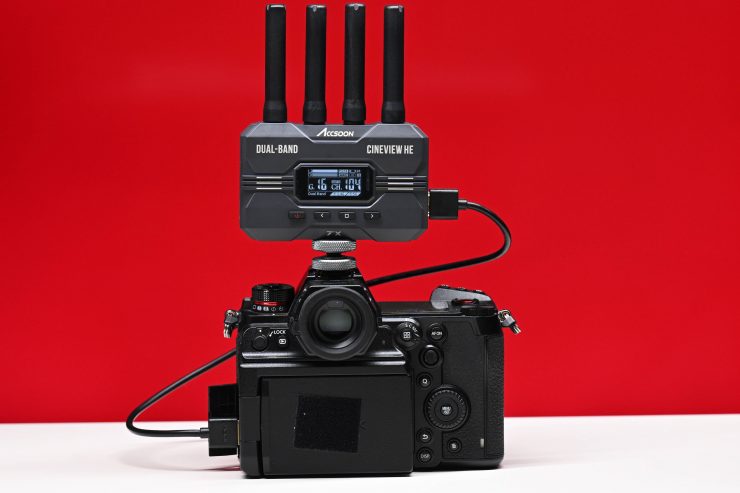
What is a little strange is that both the HDMI In and HDMI Out are located on the right-hand side of the TX and RX. All of the Hybrid mirrorless cameras and cameras such as the Canon C70 have their HDMI outputs on the left-hand side of the camera. Depending on how you mount the CineView HE TX this could be an issue as you need to run the HDMI cable from your camera around the back of the transmitter.
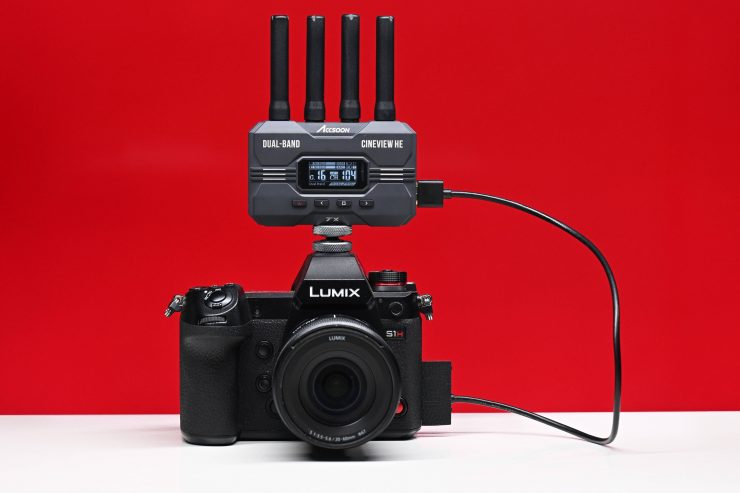
If you want to have the HDMI input on the same side as the HDMI output of your mirrorless hybrid, then you can simply just face the front of TX unit forward. The only caveat with doing this is that you can’t see the screen anymore.
What do you get?
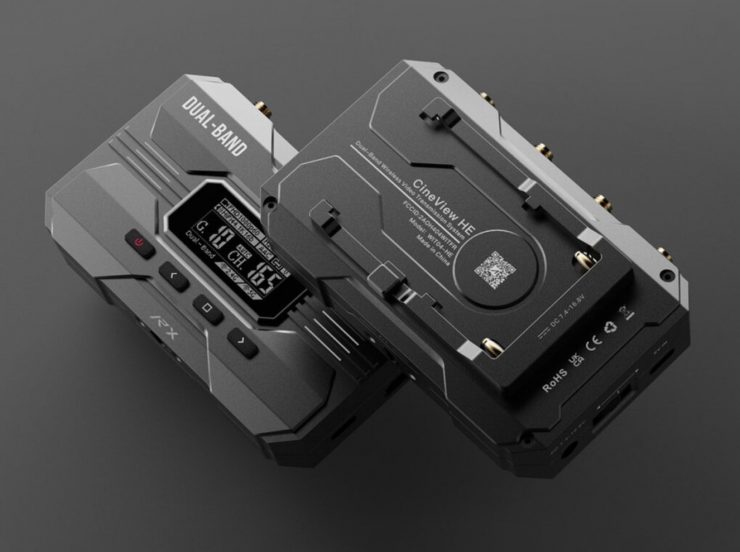
The CineView HE Wireless Video Transmitter & Receiver Kit comes with the following:
- Accsoon CineView HE Wireless Video Transmitter & Receiver Kit
- Transmitter
- Receiver
- 9 x Antenna
- 2 x Shoe Mount Adapter
- Limited 1-Year Warranty
Dual-Band Transmission

The new Accsoon CineView HE operates on Dual Band 2.4GHz and 5GHz frequencies. The way this works is that the transmitter sends the same image twice using 2.4 GHz and 5GHz frequencies, and the receiver then combines the two streams as needed to create a complete single stream. Because CineView HE utilizes Dual Band frequencies at the same time it is claimed to be inherently more stable than its rivals.
The CineView HE can send up to 1080p60 over Dual-Band (2.4 GHz + 5 GHz). Accsoon claims that this wireless transmission technology means you never have to worry about video or audio drop or switch signal issues again. This is a very bold claim as I have used and reviewed countless similar systems and they all drop out. I will test this claim further down in the review.
The CineView HE is also claimed to be able to transmit images and audio smoothly over a long distance, even the size of a football pitch, with a latency of less than 60 ms.
At power on, the CineView HE will automatically select the best channel for audio and video transmission.
One transmitter can stream to up to four iOS or Android devices. You can use a combination of Android or iOS devices, as long as you aren’t using any more than four.
The CineEye 2S uses HEVC compression and as I have already mentioned, it can send video signals up to 1080 60p.
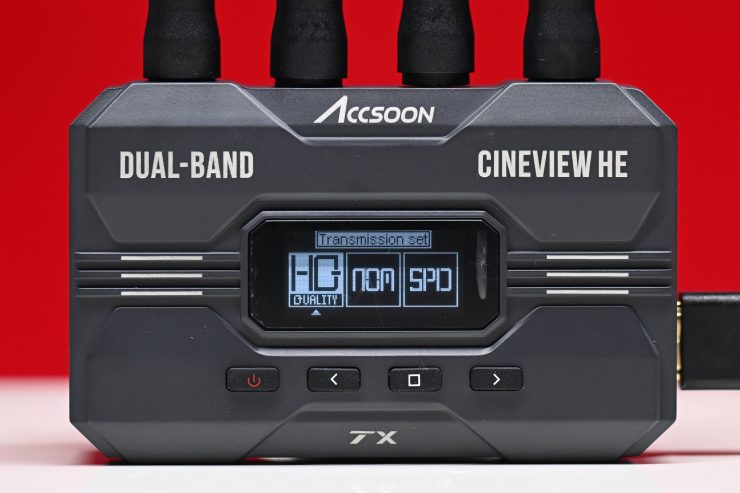
There is a Data Rate Setting that you can adjust on the TX unit. There are three different modes you can choose from:
- High-Quality Mode
- Normal Mode
- Speed Mode
What you need to check carefully is that you have both the TX and the RX set to the same mode. While you can select different modes for both the TX and the RX I personally think it is better to have both set to the same mode.
Depending on the mode you choose, the latency and the quality of the image will change. If you want the least latency then Speed Mode is the one you want to choose. If you want the best image quality then High-Quality Mode is what you should use. Normal Mode is essentially a middle ground compromise between the other two modes.
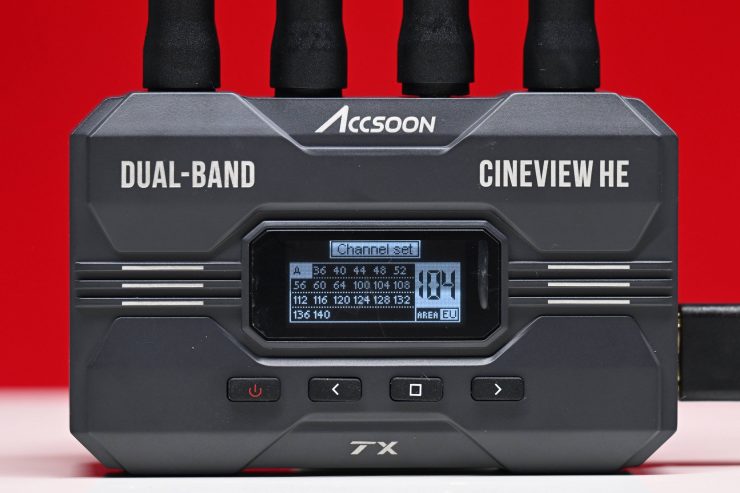
You can select from a range of different operating channels or just set the TX unit to Automatic channel selection.

Accsson does allow you to directly change the Group channel on the left-hand side of both the TX and RX units. If you do change the Group on either the TX or RX you will get a warning on the screen that the pairing parameters have changed and you need to re-start the units for the changes to take effect. Now, what you need to be aware of is that you need to do the same process on both the TX and RX if you make a change to the Group. They won’t automatically pair up if you just change the Group on one and not the other.
I did find that after you make the change to the Group on both the TX and RX units and you re-boot both of them it does take a little while for the RX to find the same channel that the TX is transmitting on.
UVC Direct Streaming
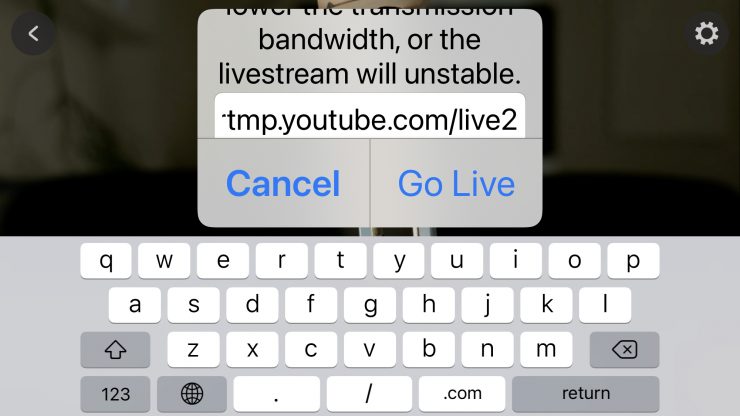
A UVC output via USB-C allows direct connection of the CineView HE receiver to a computer so you can livestream HD images. This helps to simplify the whole process of going live on YouTube, TikTok and other RTMP streaming platforms. This is the same capability as what Hollyland features in its COSMO C1. The CineView HE receiver can also be used with vision mixers with UVC or HDMI inputs for increased flexibility.
Live streaming using the RX is not supposed to be that difficult. You connect to the app, then there is a ‘go live’ button where you can input your RTMP stream key and RTMP URL address. Obviously, you are using the Wi-Fi to connect to the CineView HE so you need to stream either using the phone’s data connection or via a Bluetooth-connected data connection. Also to do this reliably you need to select a specific quality setting. This means you need to select Speed as the quality setting and the picture quality won’t be as good when you start to stream.
I tried this with YouTube live and it was reasonably straightforward and easy to use.
I personally don’t think that the ability to stream directly over USB-C is as big of a deal as marketing people want you to believe. You can buy an HDMI USB capture interface for around $20 USD. You could simply plug an HDMI cable into your RX unit and then into the capture interface to achieve the exact same result. In saying that, it is always nice to have as few links in the chain as possible.
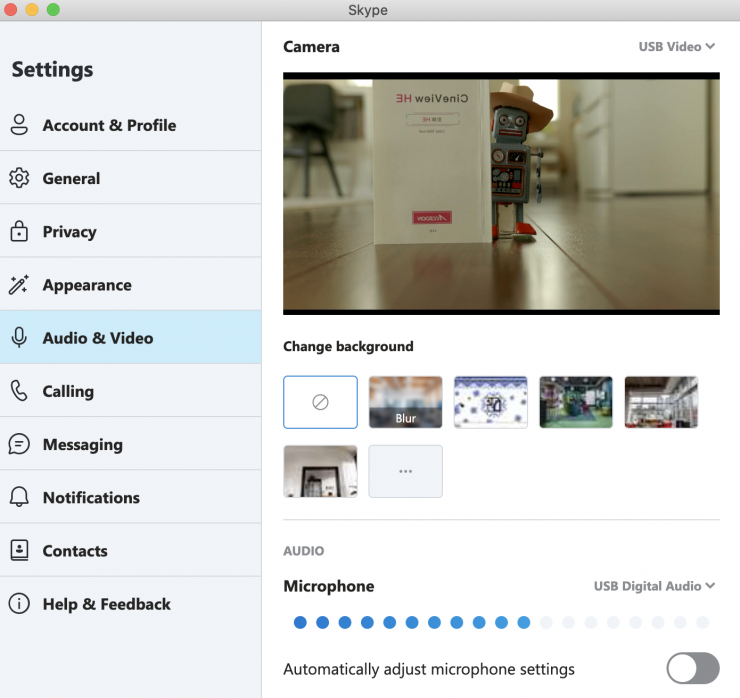
You can also use the CineView HE as a wireless webcam device, however, the image does get flipped and I found that the colors being shown did not reflect those being seen on my camera. There is also quite a large image delay.
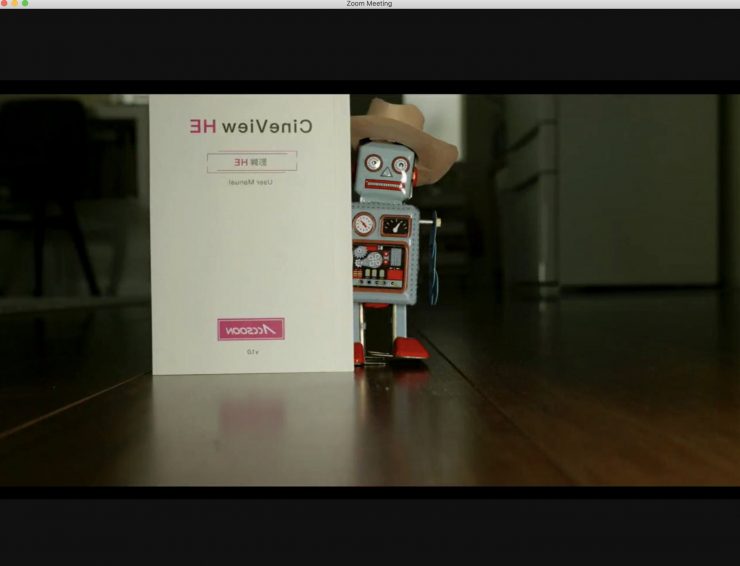
I also tried it with Zoom, and the image also gets reversed and I found that the quality of the image I was receiving wasn’t very good. The colors were bad and blacks get massively crushed.
Operating Interface
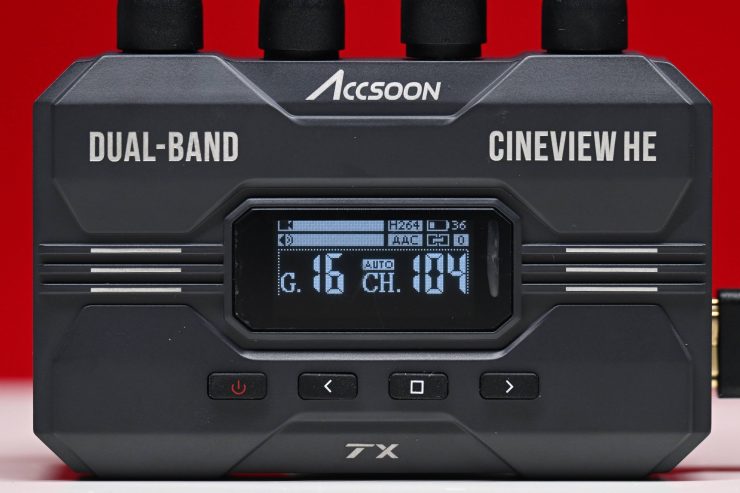
The screen is big enough and it lets you see key information clearly.
The boot-up time is fairly slow for this device. It takes around 17 seconds from the time you turn on the TX unit until it comes up on the main screen. This is something you need to be aware of.
The menu system is very easy to navigate and for making changes. There are no complex menus or endless pages that you need to deal with.
HDMI
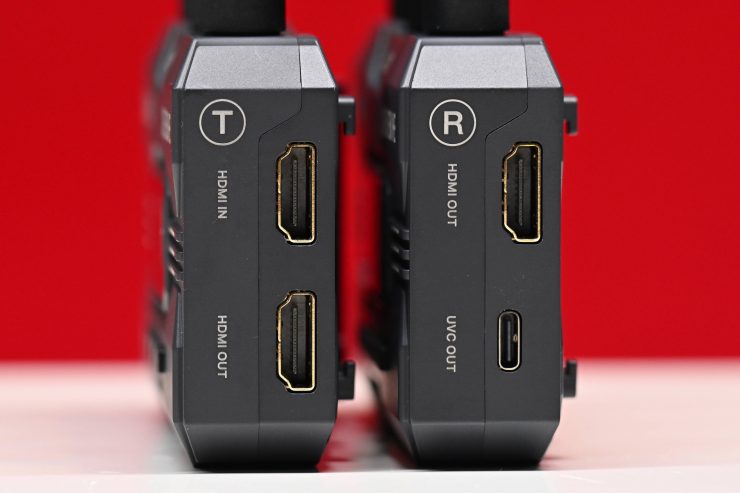
The CineView HE TX has a single full-sized HDMI input and an HDMI output, while the RX has a single full-sized HDMI Out.
As the TX unit has both an HDMI In and an HDMI Out you can loop through a video signal which is handy.
How is it powered?
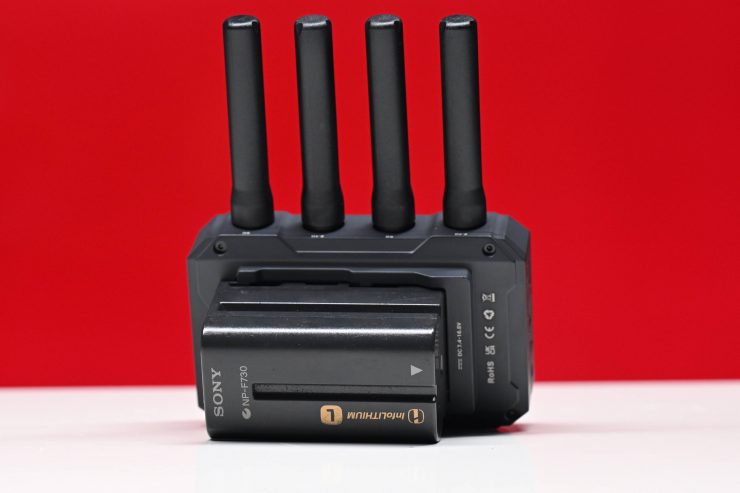
The CineView HE TX and RX can be powered via a single Sony NP-F style battery. According to the company, a Sony NP-F970 battery can power the unit for up to 12 hours. I found the battery performance to be good and you can use the system for a whole shooting day without having to constantly worry about when the battery will run out.
You can also choose to power the unit through the DC input (7.4V to 16.8V) if need be. If you are inputting a 7.4V to 16.8V DC signal you can also run a battery and then hot swap that battery without the unit turning off. What I like to do is to run a DC input in combination with a smaller-sized NP battery. That way when I have to change my camera battery over, the wireless TX stays on even when I turn the camera off. The DC input is always prioritized over the battery.
The CineView HE also features the ability to be powered via a USB-C (minimum 5V/2A) source. I like that there are thee ways you can power the device.
The RX unit draws 4.5W (Typical) and the TX 4.2W (Typical).
Yes, having a built-in battery would have made the CineView HE smaller, but I personally prefer to be able to power a TX unit through the use of batteries or through a DC power input. Internal batteries have a habit of dying exactly when you don’t need them to!
iOS & Android App
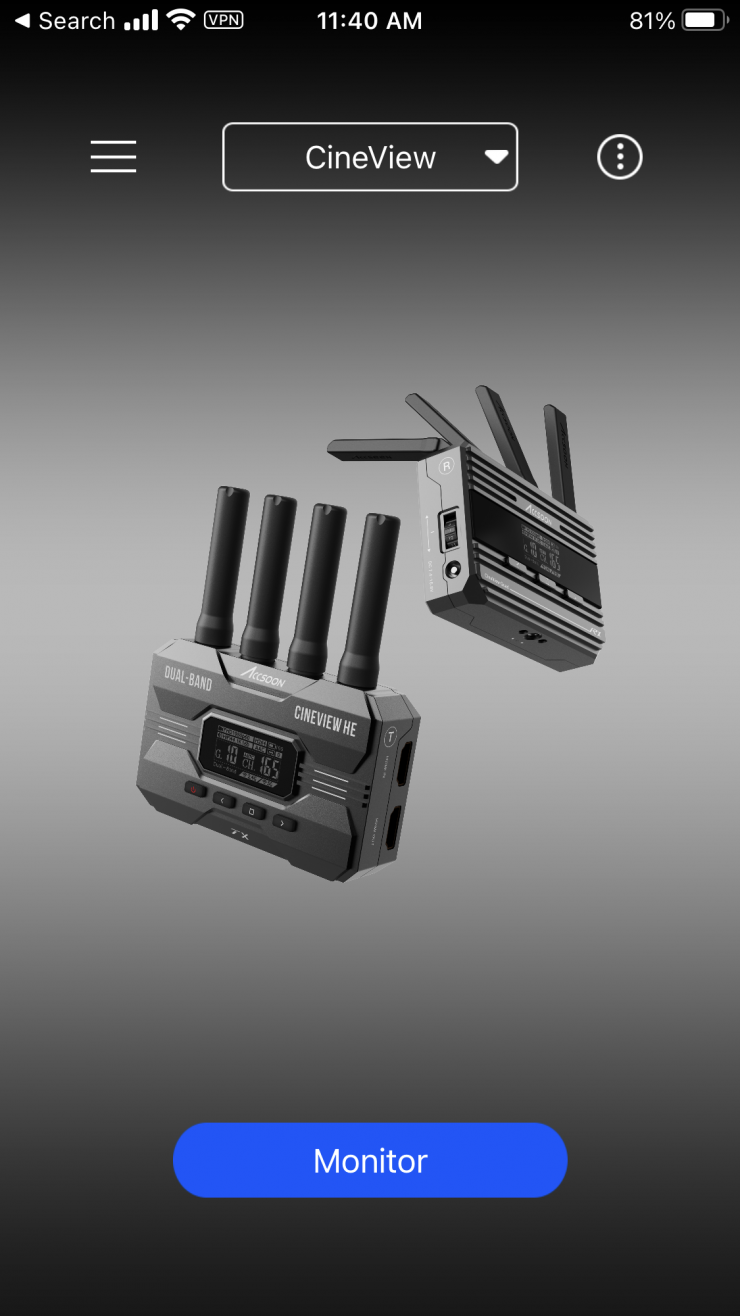
If you are streaming to an iOS or Android device, you can use the Accsoon App to monitor your wireless stream. The App features a lot of functionality and monitoring tools such as focus assist, waveform, false color, zebras, in-app audio and video recording, as well as the ability to load up your own 3D LUTs.
It is supposed to be fairly easy to set up and get the app running. You just launch the app, turn on the TX unit (making sure it is receiving a signal from the camera) and join the Accsoon Pro Wi-Fi network. However, when I tried to enter the default password, which is 12345678, It kept coming up as incorrect password.
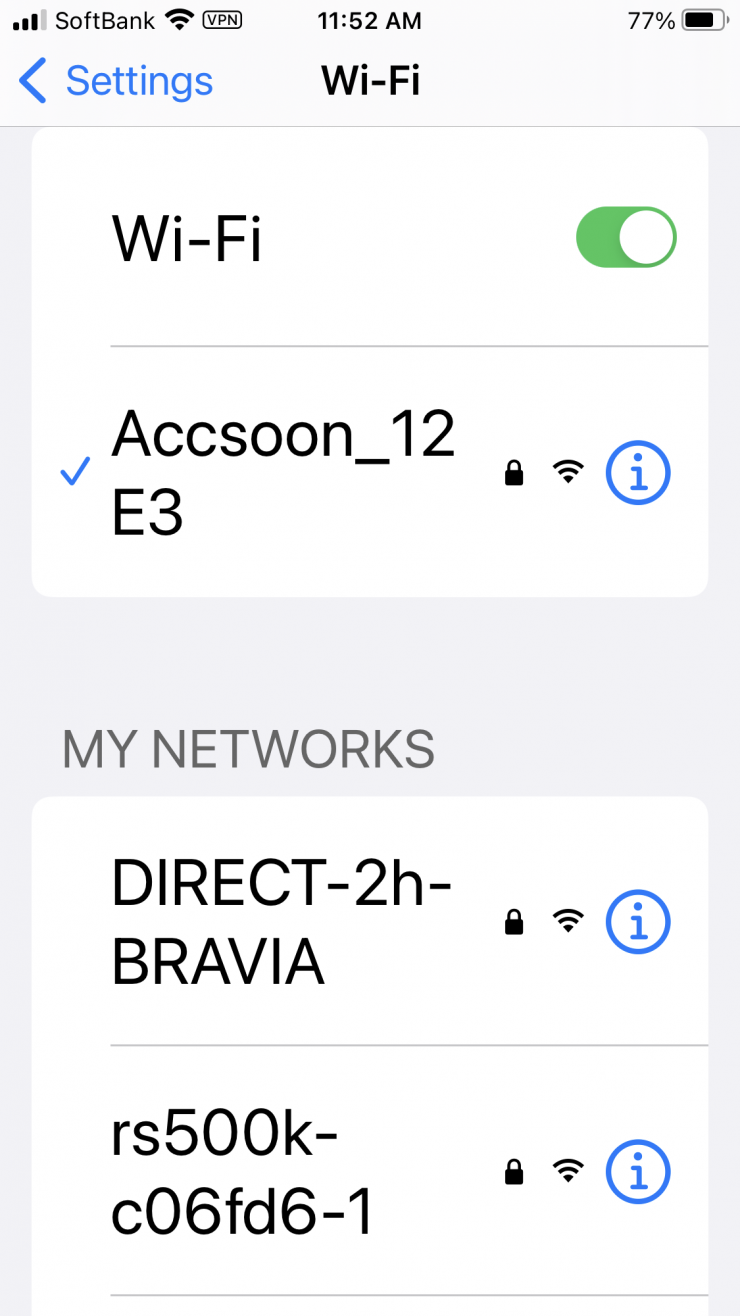
What I actually had to do is join another network called Accsoon-12E3 for it to work.
More on how it actually performs later on in the review.
Mounting Points
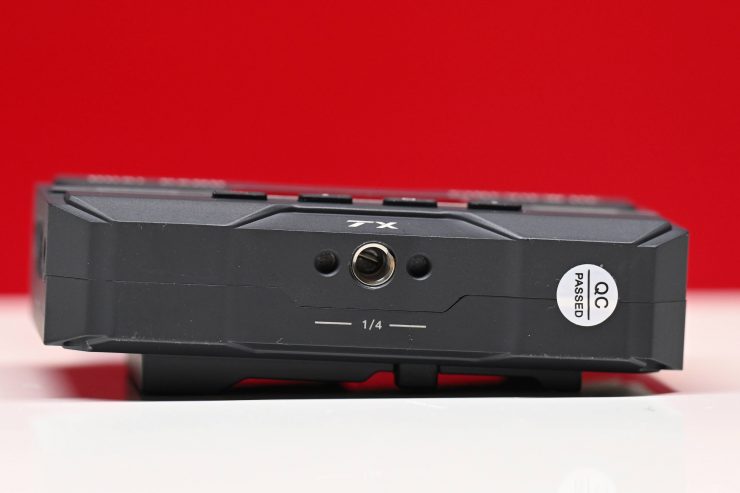
The system comes with a cold shoe to 1/4 20″ mount. This is reasonably well made, however, because there is only a single mounting hole on the bottom of the TX it can limit where you can place it on your camera. If you want to mount the TX in another position you would have to use a monitor arm or something similar.
Accsoon Go App Usability
The app features some nice functionality, and it is certainly a lot better than most other competing products apps.
Here is what monitoring functions are available using the app:
- Gray
- RGB
- Histogram
- Waveform
- Focus Peaking
- Look
- Zebra
- False Color
- Markers
- Anamorphic de-squeeze
- Grids
- Display
- Audio
- LUTs
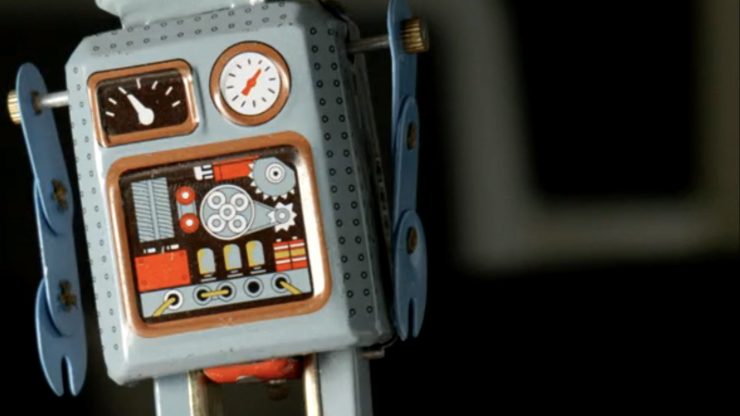
You can do focus magnification by pinch to zoom directly on the screen. While you can move around in the image when zoomed in I would have liked to have seen an indicator appear on the screen that lets you know that you are zoomed in.

You can also tap on the screen to remove the overlays to see just the image feed.
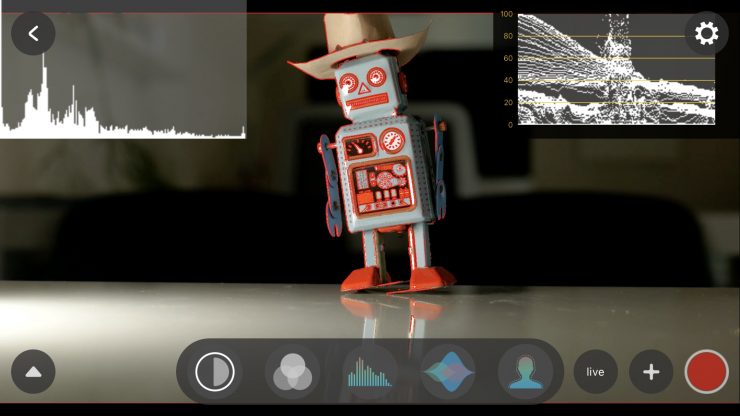
You can also have multiple view assist tools activated at the same time.
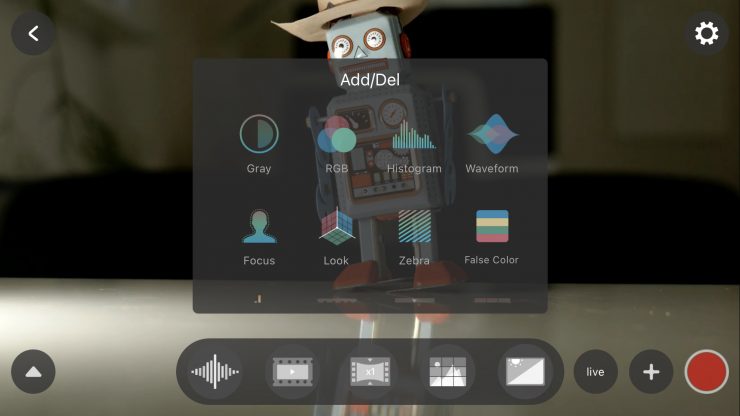
You can also choose what monitoring items you want to use. By selecting or deselecting these items you will only be able to see those items you have selected at the bottom of the screen. I do find it a little strange that the Add/Del section actually names the icons, but on the main screen they aren’t named. This does make choosing some of them a little confusing.
I like that Accsoon has actually listened to feedback and you can now see false color indicators and values for the waveform.
There is also peaking and zebras and you can change the intensity and color of the peaking, but only the intensity of the zebras. Strangely the zebras come up as a rep/purplish color.
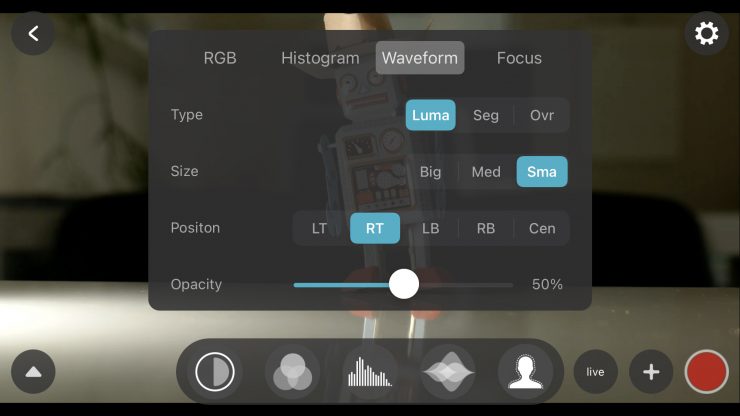
You can put multiple view assist tools up at the same time if you need to and Accssoon has improved the app so you can now change the size and positioning of items like the waveform and histogram.
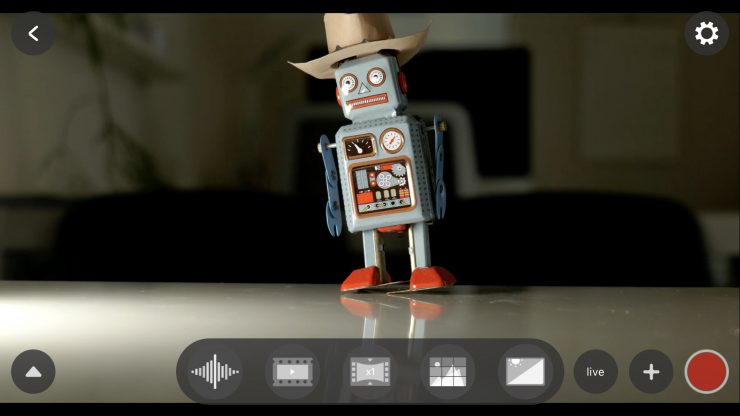
I like that you can actually record the video you are seeing directly on the phone. While this isn’t great quality it does allow you to view back clips and also to upload something to social media if need be. Unlike apps from other rival companies, you can also bring up any of the view assist tools while the phone is recording, as well as use the pinch to zoom functionality.
The picture quality of the signal coming up on the app is pretty good. It will probably be good enough for most people who are buying a system such as this. In all honesty, it is one of the better-looking pictures I have seen from a wireless app-based system at this price.
Image Delay
Image delay can be a problem with HDMI based devices, but it really depends on the camera you are using. Some cameras have horrible image delay over HDMI, while others are really good. Cameras with SDI tend to have a lot better latency, but when you are dealing with wireless image transmission devices that send a compressed signal over Wi-Fi then there won’t be a massive difference between HDMI and SDI delay, although this would depend on the camera.
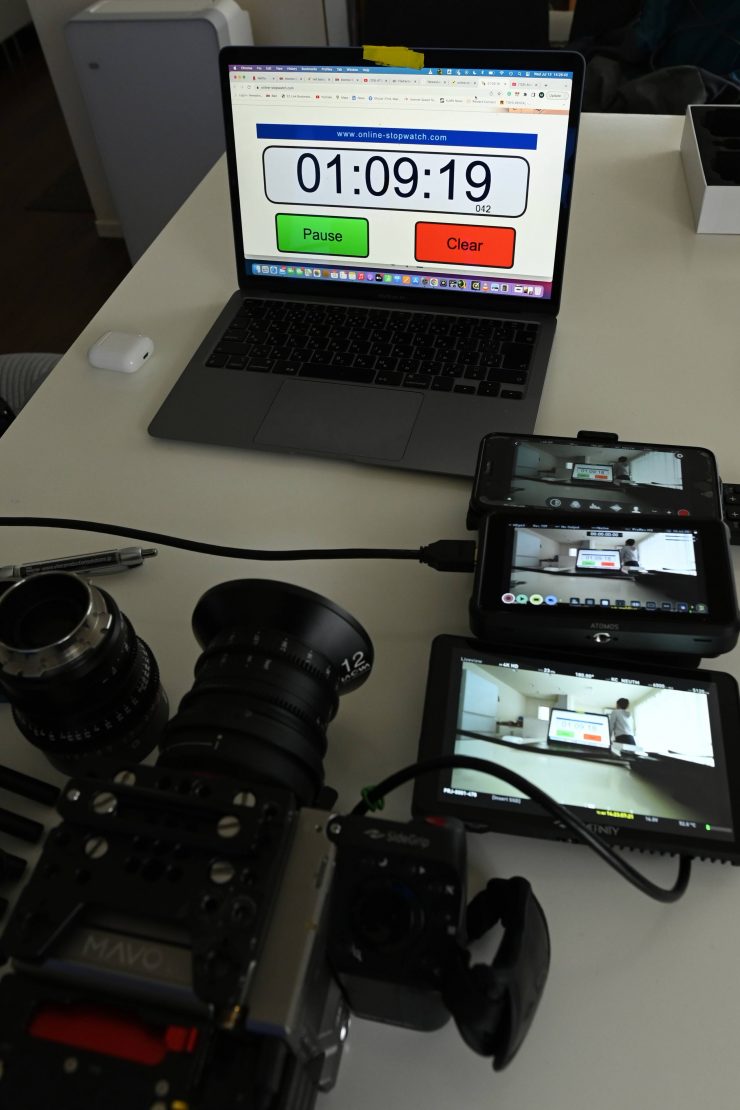
So what is the delay like over HDMI from the Kinefinity MAVO LF? I measured the delay average over a series of three tests when using the Accsoon Go app and outputting directly to a monitor from the RX unit. Below you can see the results when the system was set in all three transmission modes:
| Monitor Latency | Accsoon App Latency | |
| Speed | 59.33ms | 70.66ms |
| Normal | 54.33ms | 64.66ms |
| HQ | 85.66ms | 96.66ms |
When it was set to Speed transmission it recorded an average delay of 59.33ms when outputting from the RX to a monitor and 70.66ms when receiving a signal on the Accsoon App.
When it was set to Normal transmission it recorded an average delay of 54.33ms when outputting from the RX to a monitor and 64.66ms when receiving a signal on the Accsoon App.
When it was set to HQ transmission it recorded an average delay of 85.66ms when outputting from the RX to a monitor and 96.66ms when receiving a signal on the Accsoon App.
These results were good for a budget wireless video system. Accsoon quotes a figure of less than 60ms for latency, and those figures from my testing seem to be correct when using either Speed or Normal transmission modes. What was a little odd is that the system had less latency when used in the Normal mode than the Speed mode. To double-check I actually did this same exact test multiple times just to make sure the data I collected was correct.
What do these figures actually mean? Well, anything below 100ms is considered to be low, because most humans don’t perceive a delay that small. Once you get over 100ms we perceive a noticeable delay.
Above you can see what the delay looks like in real-time with the Kinefinity MAVO LF when the CineView HE TX and RX was in the Normal Mode. This is the default mode when choosing the Data Rate Setting. You can clearly see the delay from what is happening in front of the camera to what is being displayed on the camera’s monitor, an external monitor connected to the RX unit, and what is being seen on the App.
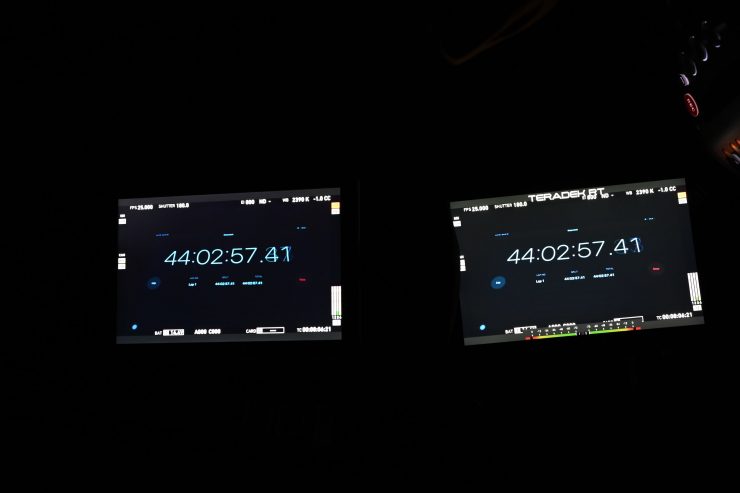
As a reference, above you can see that there is zero latency when using an expensive Teradek system (well, as close to zero as you can get. No wireless system is really zero in the scientific sense). This is a prime example of why you pay more money for a high-end wireless video system.
I was reasonably impressed with the low latency of the Accsoon CineEye 2S system. Given its relatively low price point it does a good job for a system that doesn’t send uncompressed video.
Look, if you are just using your wireless system for monitoring and nothing else, then latency is not going to be a big issue. However, If you want to do remote focus control then you really should be looking at an uncompressed wireless video system that has zero latency.
What you clearly need to know is that the amount of latency you will see can vary dramatically from camera to camera, especially when using HDMI.
HDMI has inherent image dealy problems, and yes if you combine that along with one of the cheaper wireless video systems you can get a lot of latency. At the end of the day, there needs to be an acceptable limit that you are willing to tolerate.
Delay on other similar systems
All wireless video systems that don’t send uncompressed video are going to have latency.
As a comparison, the average delay over HDMI for the Hollyland COSMO C1 when doing the exact same test was 76ms.
I also tested the Accsoon CineEye 2S Pro Wireless Video Transmitter & Receiver when using HDMI and found that it had an average latency of 46ms when viewing images on a monitor connected to the RX unit when the TX was set to Normal transmission.
Real-world performance
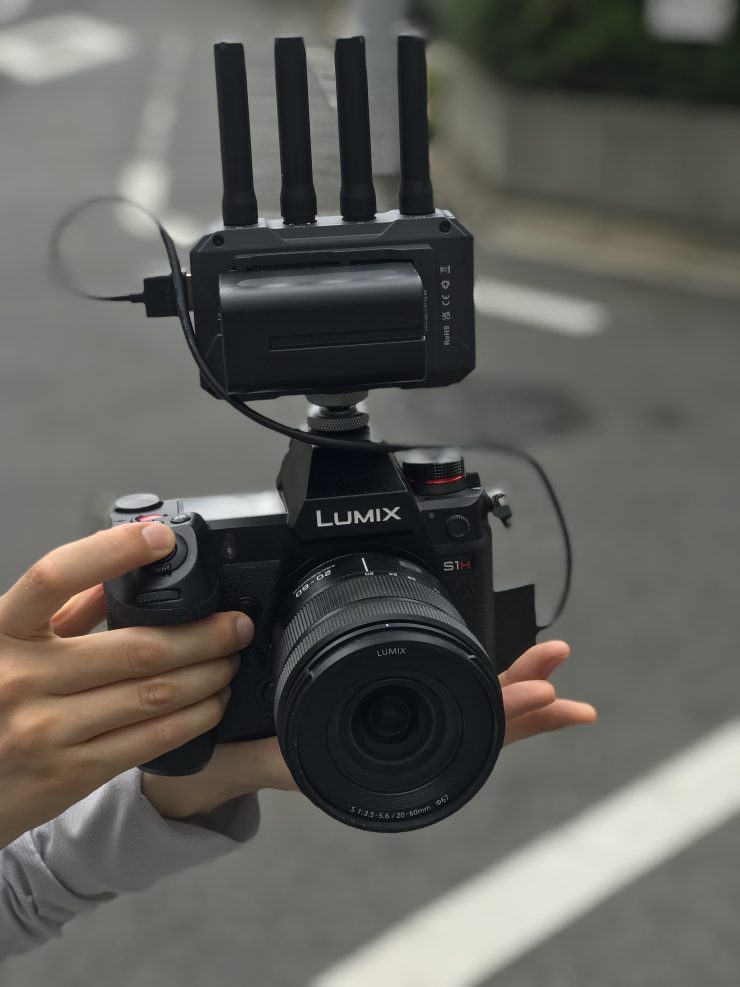
How does the CineView HE actually perform in the real world? Well, let’s find out.
One of the most important things for me apart from image delay and the operating range is reliability and usability. There is nothing worse than a wireless video system where you continually have to reset the system or restart apps.
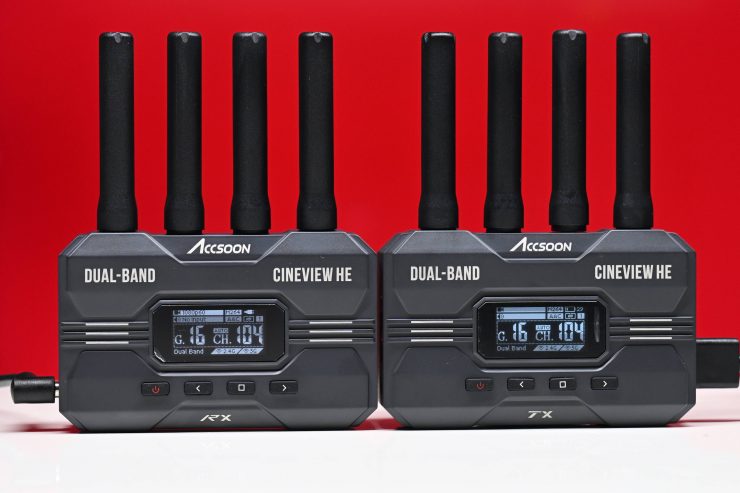
I wanted to do a few tests to see how quickly the CineView HE recovers when the HDMI cable is pulled out, the camera gets turned off, or when it runs out of battery power.
Firstly I wanted to see what would happen if I lost connection, so I turned the CineView HE TX off and then back on again. The problem I encountered is as soon as you turn the unit off the picture freezes up on the app and it won’t come back. This is because the CineView Pro WiFi network gets turned off and it won’t just reconnect back up. You need to reconnect to the WiFi network and then restart the app.
So what about if I pulled out the HDMI from the camera and then plugged it back in? The system re-established the connection in around 4 seconds.
What happens if I turn the camera power off and then turn it back on again? The signal came back in around 2 seconds after the camera had re-booted up.
So what would happen if I suddenly changed the frame rate to 50p from 25p on my camera while the system was on? The Accsoon automatically recognized the change and I didn’t lose the image on my monitor.
So what about the operating range? The real transmission distance is relevant to the current air electromagnetic environment, because the system works in the ISM band, and therefore has exposure to all kinds of 5GHz band air interference.
With this in mind, I decided to test the range and performance of the system. To test the range of the system I remained in line of sight of the camera and TX unit and started walking away with the app running on my iPhone and with an RX unit attached to an external monitor. I found that I could get around 350m (1148′) and still have a stable signal on the app the app and on the monitor that was attached to the RX unit. I ended up running out of straight road for this test and I think I could have gone even further and still had a signal.
Yes, this kind of range for a budget system is impressive, however, it is susceptible to interference and break up if anything gets between your camera and the person who is monitoring. It was good to see that both the app and the RX unit both had a good operating range. The app is more suceptable to break up and signal loss than the RX unit.
As a comparison, when I tested the Hollyland COSMO M1 I found that I could easily get 350m (1148′) and still have a stable signal. I’m sure I could have gotten even more distance, but I ran out of straight road where I was doing the test.
Whenever I review wireless video transmitters I do the test in the exact same place under the same operating conditions. This way I get a good idea of how various competing systems compare.
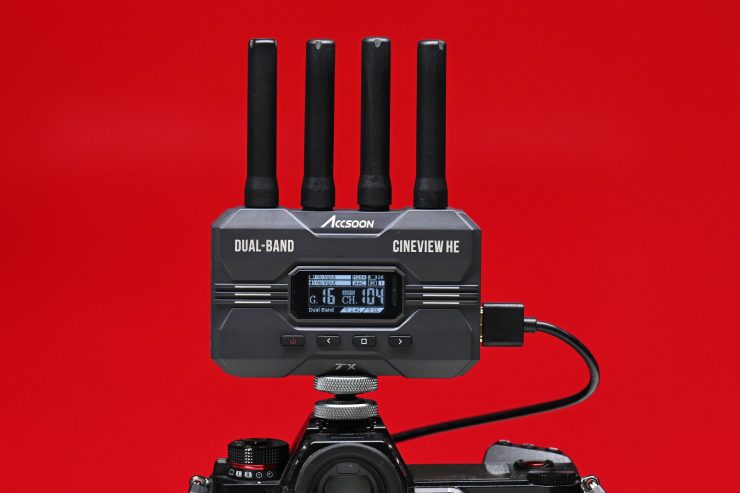
I also found that if I attempted to use the CineView HE at the same time as another wireless video TX unit, that TX unit just overpowered the signal, and the CineView HE became unusable. This is something to just keep in mind.
The range of the Accsoon CineView HE was as advertised, however, you do get a lot more image breakup than when using most other dedicated uncompressed TX and RX wireless systems.
Price & Availability
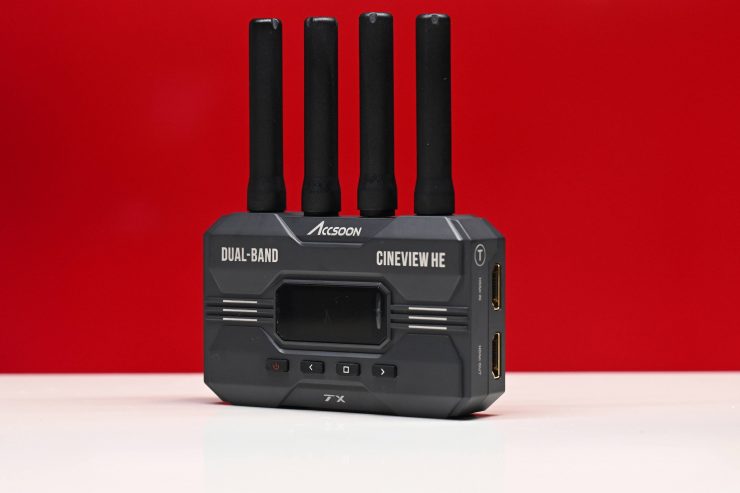
The Accsoon CineView HE Wireless Video Transmitter & Reciever Kit retails for $499 USD. According to Accsoon you can purchase it already even though their website states that it is scheduled to become available around the 23rd of August. B&H also has it listed as a new item that is coming soon.
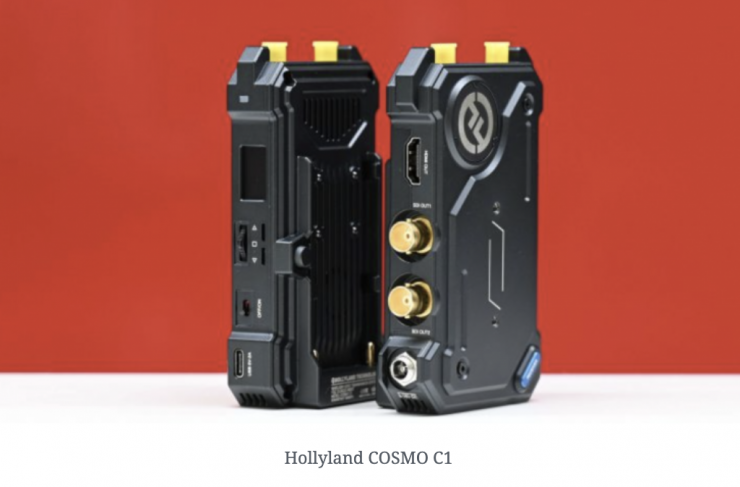
The closest competition is arguably from the Hollyland COSMO C1 which costs $899 USD. The COSMO C1 works in the 5.1GHz-5.8GHz frequency spectrum. It has most of the same capabilities as the Accsoon although the TX has an SDI In, SDI Out, and an HDMI In, while the RX has an SDI Out, SDI In, and an HDMI Out. The Hollyland has a claimed operating range of 1000′ Line-of-Sight which is slightly shorter than the claimed range of the Accsoon.
Conclusion
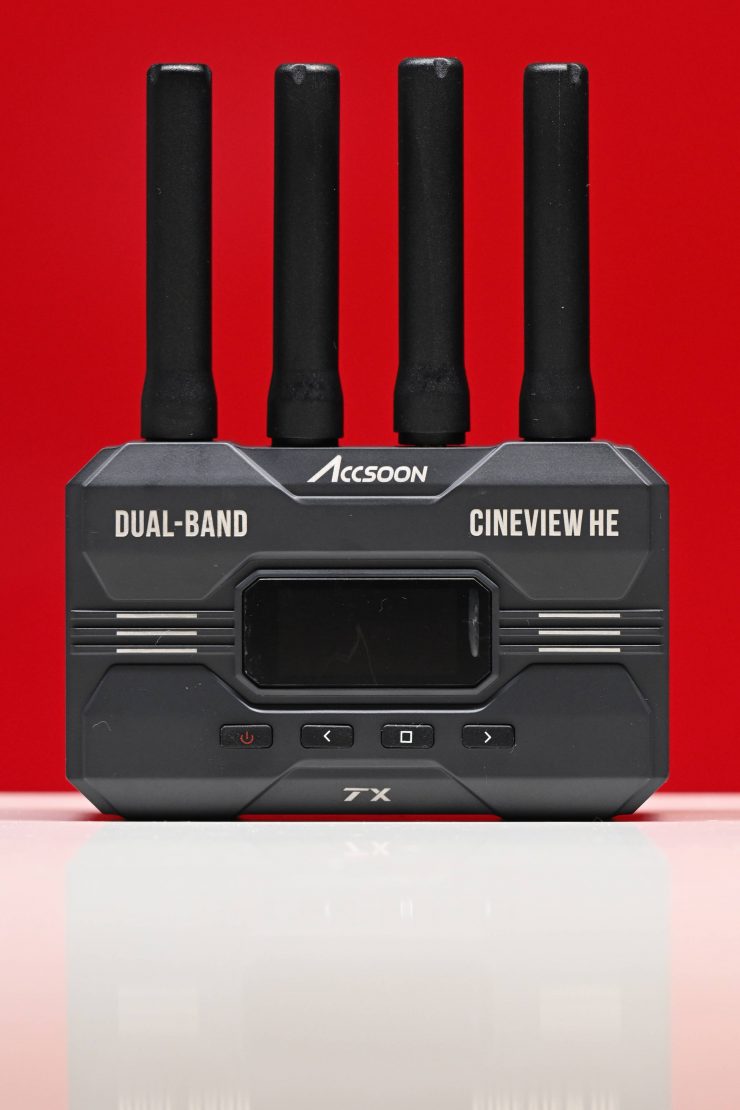
The Accsoon CineView HE is well made, relatively easy to set up and use, and it has a good operating range. The quality of the image being displayed on the Accsoon app is pretty decent and it is certainly one of the best wireless video monitoring apps that is available.
As far as image delay goes it is pretty good, especially if you are using it with a camera that doesn’t have bad HDMI latency.
You need to clearly know that this system, and similar systems just like it, are not going to provide you with latency-free images. The results you are going to get will depend greatly on the camera you are using. In saying that, my testing showed that the latency is reasonably minimal. This is not a system you would want to pull focus with remotely. You need to clearly be aware that this isn’t a product that has been designed to compete with non-compressed, low latency systems.
This is really a product that is designed to be used when you are close to the camera you are transmitting from. In situations like that it works very well. Once you start trying to use it over some distance it doesn’t work as well and it will be subject to drop outs.
Having the ability to rig up a lightweight and compact TX unit to a camera so that producers, directors, clients, or even a sound recordist can see your images is really handy. Look, this is not a solution that will be suitable for everyone, but it is an affordable way for anyone to offer a wireless feed to clients or people they work with.
Accsoon has forged a good reputation for making affordable wireless video kits that are well made, feature-rich, and most importantly, have reasonably low latency. The CineView HE certainly follows in those same footsteps and it is certainly worth looking at if you are in the market for an HDMI wireless video system that won’t break the bank.
Like what we do and want to support Newsshooter? Consider becoming a Patreon supporter and help us to continue being the best source of news and reviews for professional tools for the independent filmmaker.

